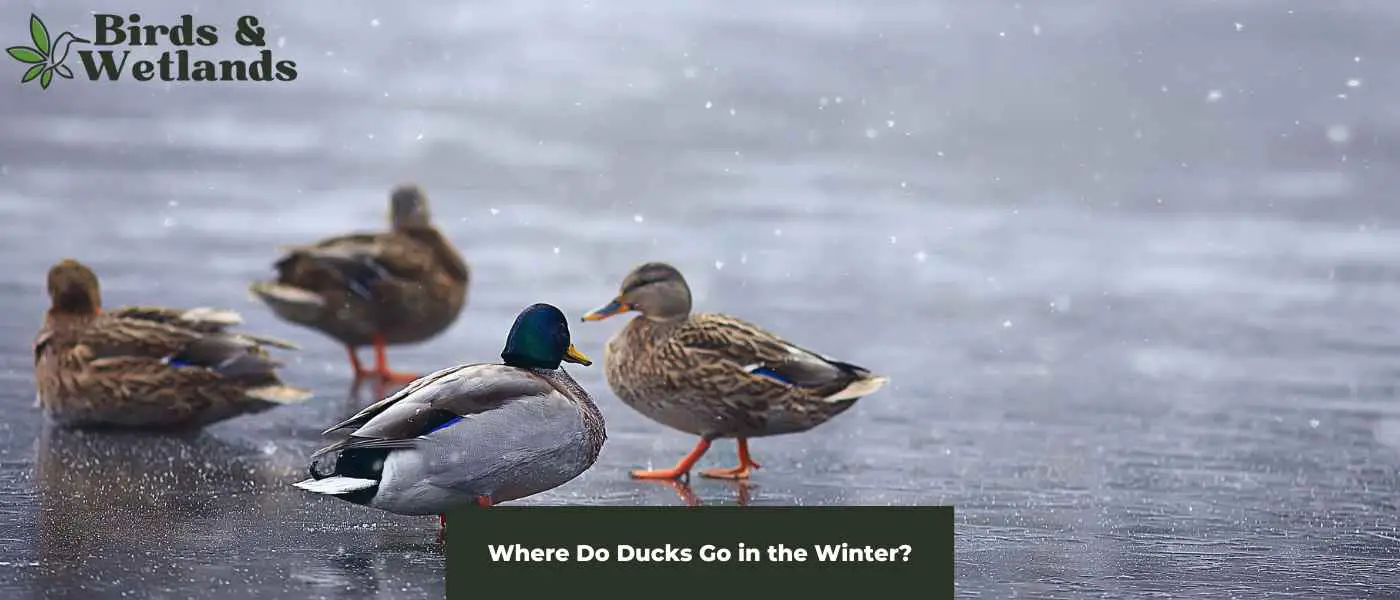When you see those large flocks of ducks migrating in the winter, do you ever wonder where they fly to?
Where exactly do ducks go in the winter months?
During winter, many duck species migrate to warmer climates in search of food and more hospitable living conditions. Ducks that breed in northern regions often fly south to milder climates along coastlines, wetlands, or other bodies of water that provide abundant food sources and open water.
Some species, such as Mallards, can be more resilient to cold temperatures and may remain in their breeding grounds if they have access to open water and sufficient food.
Key Takeaways on Ducks Migration Patterns
- Not all ducks migrate in the winter. Some duck species remain in their home territory year-round, while other ducks tend to migrate south to warmer climates during cold weather.
- To escape very cold temperatures, some ducks must migrate towards the south to find suitable habitats. This fall migration can take them thousands of miles, all in search of better weather conditions and a warmer climate.
- During migration, ducks often stop at large bodies of water, such as the Great Lakes, where these waterfowl can rest and feed.
When Do Ducks Migrate South?
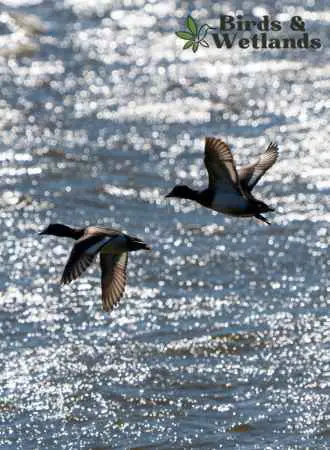
Like other birds, many ducks in Northern and Central Europe and North America migrate at the end of the summer, typically in September or October in a mild winter. Some ducks may migrate even later in the year if the winter is not too cold.
Why Do Ducks Fly South for Winter?
As winter approaches, several species of ducks leave northern nesting areas and migrate to their wintering grounds to stay warm. They fly to find warmer nesting grounds where they can spend the cold months.
Like most birds, ducks migrate to warmer places to avoid the cold weather. Ducks are comfortable in warm temperatures. When it gets too cold, they start to feel uncomfortable. By flying to southern portions of the country, they can escape the cold and find more comfortable temperatures.
The food sources that ducks typically rely on are scarce during the winter. To find better food sources, most ducks go south. Many other bird species also migrate because of the lack of food in the winter. These birds can find food and survive when they migrate south.
Do Northern Shovelers Fly South?
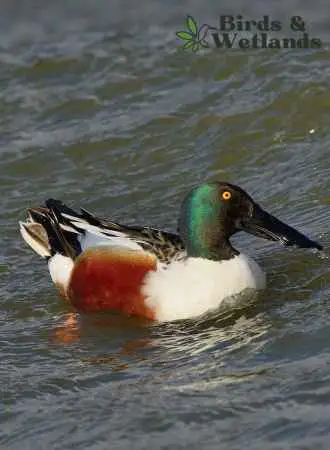
Yes, Northern Shovelers do fly south for the winter. This duck species migrate to areas where the winters are not as severe, such as the southern United States and northern Mexico.
The Northern Shoveler is one of the most common duck species in North America. They can be found in many different types of habitats, but they prefer breeding grounds that have open water and dense vegetation. In North America, this duck species breed in Alaska and northern parts of Manitoba, Canada.
Do Northern Pintails Migrate?
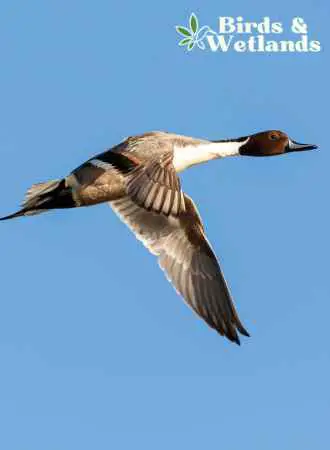
Northern Pintails are a migratory duck species that travel long distances between their breeding and wintering grounds. The Northern Pintail typically breeds in northern areas of North America, including parts of Canada and Alaska.
In the fall, these waterfowl have been seen moving south to regions like California, Texas, and Mexico. This journey can be more than 3,000 miles long.
During their migration, Northern Pintails often travel in large flocks. This enables them to share resources and protect each other from predators while traveling to their winter waterfowl habitat.
Where Do Ducks Spend Most of Their Time in the South?
Ducks are a common sight in the south and can be found in various habitats. In coastal areas, they are often seen swimming in the ocean or wading in the shallows. Inland, they can be found in flooded agricultural fields, lakes, rivers, and coastal marshes.
However, ducks also spend much time on land, foraging for food and rest. In the south, ducks are most likely found on the coastal fringes, where there are abundant foods and shelter. Additionally, they will also venture inland and on dry land during migration when they travel to their winter nesting grounds.
Overall, these birds spend most of their time during winter actively searching for food.
Can Ducks Freeze to Death?
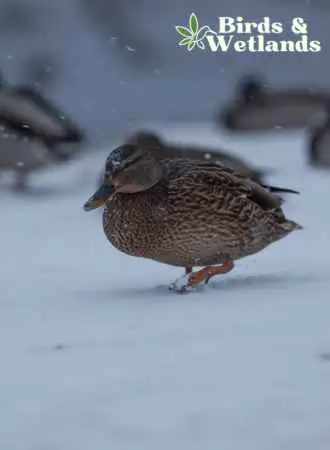
In cold climates, ducks can freeze to death. Their insulating feathers provide some insulation against the cold, keeping the body warmer than the air temperature. Nevertheless, if the temperature drops below freezing and they cannot find shelter, they will eventually succumb to the freezing temperatures.
Ducks exposed to the elements also risk developing frostbite, which can cause their skin and tissue to die. In extreme cases, frostbite can lead to amputation of limbs.
In addition, cold weather can also make ducks more susceptible to illness, so it is crucial to provide them with a warm, dry place to rest during the harsh weather months.
Where Do Ducks Sleep in the Winter?
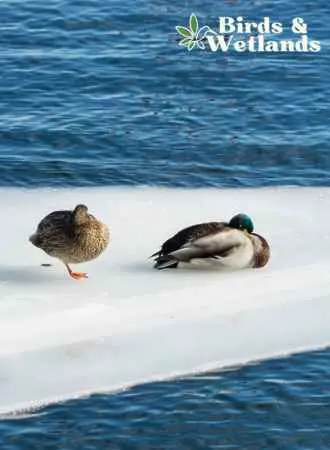
Depending on the species, ducks will either fly to southern areas or stay in the north for the colder months.
Those ducks that travel south will sleep either on land or in the water. Land-based sleeping sites are usually close to the water and may even be in wet areas such as marshes. These locations offer some protection from predators and inclement weather.
Ducks that sleep in the water typically do so in large lakes or ponds with few predators, and the water is calm. These sleeping sites offer less protection from the elements, but the ducks can more easily escape if necessary.
Ducks that stay in the north for the winter will typically sleep at their summer nesting ground. These sites offer some protection from predators and the weather, but they may not have access to open water. Even though these ducks carry large fat reserves to survive colder climates, they must be careful to conserve energy.
Woodlink Cedar Duck Nesting Box
Attract ducks to your wetland area and provide them with a cozy, secure nesting space using the expertly crafted Woodlink Cedar Duck House, made with high-quality materials in the USA.

Pros
- Ornithologically designed: This nesting box is specifically created for ducks, ensuring an optimal environment for them to thrive.
- High-quality materials: Made from re-forested, kiln-dried, inland red cedar, the Woodlink Cedar Duck House is both durable and eco-friendly.
- Easy to install: The nesting box comes fully assembled, with screws included for quick and easy mounting.
- Made in the USA: Take pride in knowing that you are supporting a product that is made domestically, ensuring top-notch quality and craftsmanship.
- Versatile use: While designed specifically for ducks, this nesting box can also be occupied by other species like screech owls, squirrels, and pileated woodpeckers.
Cons
- Mounting height: Users must research and choose the appropriate mounting height (usually 4-6 feet above the ground) and install a baffle on the post to deter predators like raccoons and cats.
- Limited viewing access: Although the front of the box can be opened for viewing, it is important not to disturb nesting birds, which may limit opportunities for observation.
Why Do Domestic Ducks Not Migrate?
Ducks are fascinating creatures. Many ducks migrate great distances yearly, but domestic ducks generally do not.
Most domestic ducks have been bred much larger than their wild counterparts. This means that their bodies are not as well-suited for long-distance flight.
Furthermore, many domestic ducks are too comfortable living in captivity to bother migrating. In other words, they have everything they need right at home.
FAQs on Duck Species and Where They Spend Their Winter Months
When Do Ducks Return to Their Summer Nesting Ground?
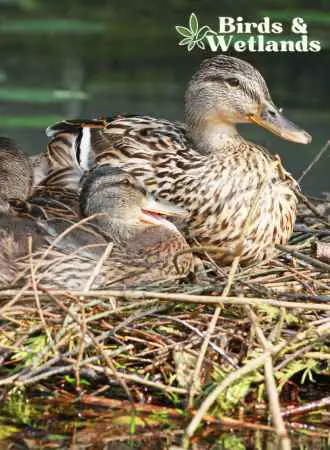
In early spring, when the ice begins to melt and the days start to lengthen, ducks begin their spring migration back to their northern breeding grounds for the breeding season. The exact timing of their migration depends on the species of duck, but most begin their journey in late March or early April.
The trip can be a long one. Some ducks may travel more than 3,000 miles to reach their destination.
Along the way, they’ll stop to rest and feed, taking advantage of any ponds or lakes they come across.
Once they arrive at their breeding grounds, they’ll build a nest and lay their eggs. Within a few weeks, the ducklings will hatch and begin exploring the world around them.
For many ducks, the journey back to their breeding grounds is an annual event. But regardless of how often they make the trip, it’s always a fantastic spectacle.
Do Ducks Go to the Same Place Every Year?
While it is not known precisely why ducks return to the same location year after year, several theories offer a possible explanation.
Ducks may have a strong homing instinct that helps them to find their way back to familiar places. Or returning to the same nesting spot provides ducks a sense of safety and security.
After all, if a duck has successfully raised a brood in a particular location in the past, it makes sense that she would want to return to that spot again.
Whatever the reason, it is clear that many ducks go back to the same place year after year.

